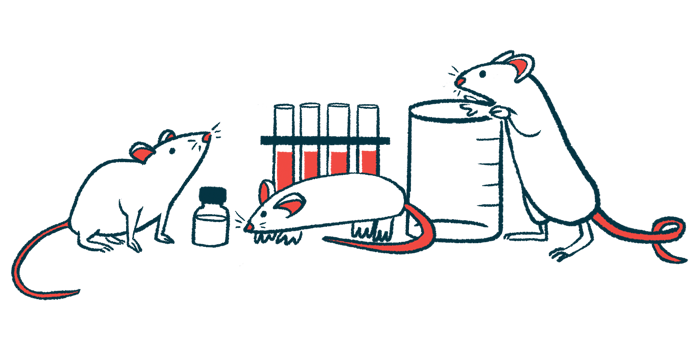Human skin cells found to boost skin integrity in RDEB mouse model
Keratinocytes derived from human stem cells show therapeutic potential
Written by |

Keratinocytes, a type of skin cell, were able to restore type VII collagen (COL7) levels and improve skin integrity when injected into the skin of a mouse model of recessive dystrophic epidermolysis bullosa (RDEB).
The primary cell type found in the outermost layer of the skin (epidermis), the keratinocytes used were derived from human mesenchymal stromal cells (MSCs), or mesenchymal stem cells, which can travel to damaged tissues, boost tissue regeneration, and reduce scarring.
“This study demonstrates the therapeutic potential of [keratinocytes derived from MSCs] for the RDEB treatment,” researchers wrote.
Titled “Histological and molecular restoration of type VII collagen in Recessive dystrophic epidermolysis bullosa mouse skin by topical injection of keratinocyte-like cells differentiated from human adipose-derived mesenchymal stromal cells,” the study was published in the Journal of Dermatological Science.
DEB is caused by mutations in the COL7A1 gene, which encodes a portion of COL7, a protein that connects skin layers. When this protein is faulty or missing, skin connections are fragile, leading to symptoms like blisters and scar tissue formation. In RDEB, patients must inherit two copies of disease-causing mutations to develop the disease.
MSC injection shown to increase COL7 levels, promote wound healing
Cell-based therapies using MSCs are a promising RDEB treatment strategy, with recent data showing that MSC injections increase COL7 levels between skin layers and promote wound healing. However, these cells are commonly difficult to obtain from the bone marrow, their most common source.
Now, researchers in Japan used MSCs derived from adipose tissue, where these cells are easy to obtain.
To evaluate the therapeutic effect of keratinocytes derived from human MSCs, the researchers used a mouse model of RDEB that develops blisters in the wrists. However, as these mice die within two weeks due to blister-related complications, their skin was transplanted onto the back of immunodeficient mice (which means their immune responses were reduced or absent).
Then, the keratinocytes were injected intradermally, or into the dermis layer of the skin, in the region surrounding the skin transplant, a process that was repeated after seven days. Skin grafts were then collected for COL7 levels.
Using a specific antibody made visible by fluorescence, the researchers confirmed that human COL7 was present in 4 of 7 mice treated with MSC-derived keratinocytes, similar to the expression observed in normal human skin. Both mouse and human COL7 were observed on the margins of the transplanted RDEB skin.
MSC-derived keratinocytes suppressed formation of blisters in transplanted skin
MSC-derived keratinocytes suppressed the formation of blisters in the transplanted skin. In contrast, there was no human COL7 in mice treated with undifferentiated MSCs or normal human epidermal keratinocytes.
Further analysis demonstrated migration of the keratinocytes and their production of COL7 in the basement membrane, located between the epidermis and the dermis.
Also, MSC-derived keratinocytes led to the formation of structures similar to anchoring fibrils, structures that connect the epidermis with the dermis and are lost in RDEB patients.
“COL7 is deposited … at the [skin] of the RDEB [mice] model, resulting in suppressed blistering … and formation of new anchoring fibrils,” the researchers wrote.
“Further investigation is needed, including the number of cells to be administered and the dosing interval, which will provide the suggestion on the best therapeutic effect and safety concerning in the clinical application,” the researchers added.







